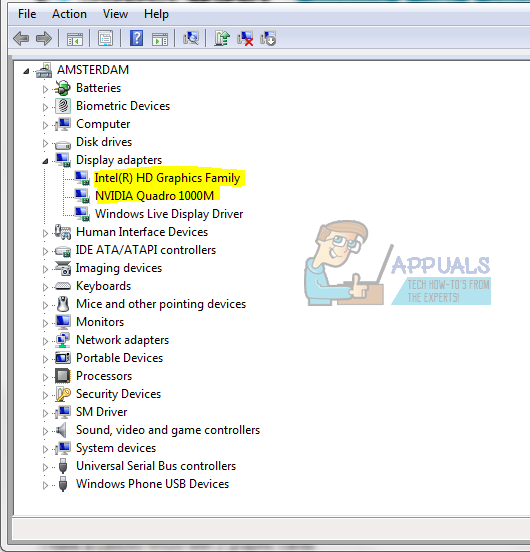If you want to know whether you have a dedicated NVidia GPU, go to Device Manager > Under Display adapters > you should see your main GPU (e.g. Intel HD Graphics) and NVIDIA. To switch to your NVidia dedicated GPU, Right-click the blank space on the desktop, select NVIDIA Control Panel to switch between two graphics manually under Manage 3D Settings > Preferred Graphics Processor. When your GPU is not running, you will see a white or blue light on the side of your laptop, on top or on your power button. This is the case when you are running small tasks. You save more power with the main GPU than the dedicated GPU. When you engage a game or a 3D movie or software, the light will turn to orange to indicate that your NVidia GPU is now running. Usually, the second GPU is more powerful than the main one. It will therefore consume more power in order to render the ‘power-hungry’ graphics. Some users complain that their PC is always running the dedicated NVidia GPU even when running simple desktop task. This is indicated by the orange light at the top, on the side of or on the power button of the laptop. Here are the reasons and a few ways to stop NVidia GPU from being on all the time.
Reasons why your NVidia dGPU is always on
If you have set your preferred GPU processor to automatically switch, there a few other things that might be keeping your NVidia dGPU on. Outdated or incompatible GPU drivers might engage your dedicated GPU as the preferred GPU. It will therefore be online even for small tasks. This is the case for computers that were meant for earlier versions of Windows, but were upgraded to later version. The audio usually engages your GPU especially if you are running the display via a HDMI connection. Bugs in the audio drivers can keep your dedicated GPU on. Nahimic audio software V2.3.7 on an MSI PC has been found to have such a bug in later Windows operating systems. Nahimic audio software offers high definition sound technology which boosts the audio and voice performance of your gaming computer therefore it is tied to the GPU.
Method 1: Update your Integrated GPU (main GPU) and your NVidia GPU drivers
You will need to update both of your GPU drivers. To do so: You can also go online and find your GPU drivers from Intel or NVidia and install them manually.
Method 2: Update your audio drivers
You will need to update Nahimic or any other audio driver software on your PC.
Method 3: Change the preferred GPU
Your PC is intelligent enough to switch to NVidia card when running games. To allow this behavior, do the following: You can custom-set graphics card and settings for each application/game at the Program Settings in the same panel.
How to quickly switch between HKCU and HKLM branchesHow to Switch Between Sheets and Cells on Microsoft ExcelHow to Switch between Tabs on Google ChromeNVIDIA 3070 Ti Positioned Between RTX 3070 and RTX 3080 To Compete With AMD…
